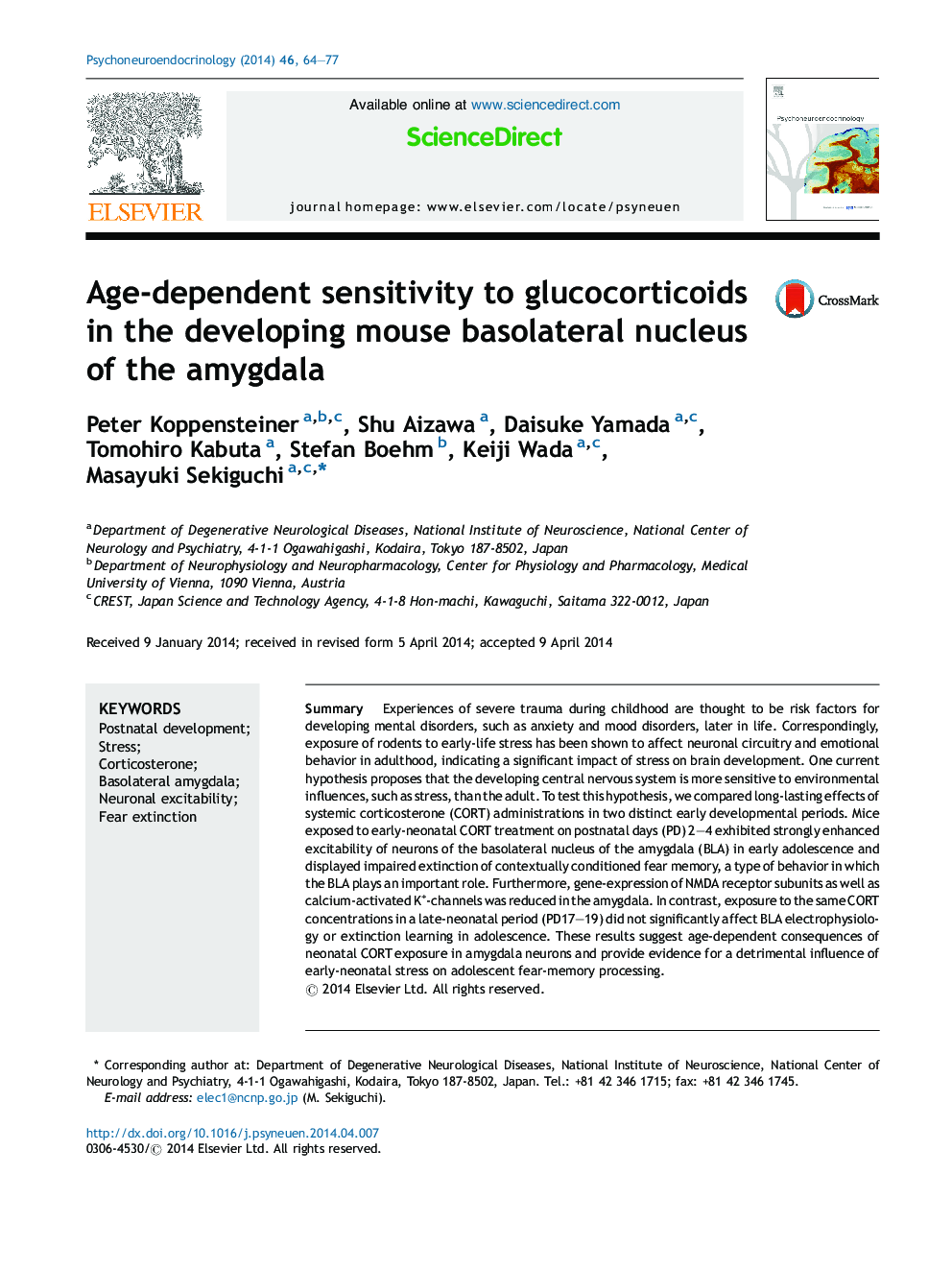| Article ID | Journal | Published Year | Pages | File Type |
|---|---|---|---|---|
| 6819759 | Psychoneuroendocrinology | 2014 | 14 Pages |
Abstract
Experiences of severe trauma during childhood are thought to be risk factors for developing mental disorders, such as anxiety and mood disorders, later in life. Correspondingly, exposure of rodents to early-life stress has been shown to affect neuronal circuitry and emotional behavior in adulthood, indicating a significant impact of stress on brain development. One current hypothesis proposes that the developing central nervous system is more sensitive to environmental influences, such as stress, than the adult. To test this hypothesis, we compared long-lasting effects of systemic corticosterone (CORT) administrations in two distinct early developmental periods. Mice exposed to early-neonatal CORT treatment on postnatal days (PD) 2-4 exhibited strongly enhanced excitability of neurons of the basolateral nucleus of the amygdala (BLA) in early adolescence and displayed impaired extinction of contextually conditioned fear memory, a type of behavior in which the BLA plays an important role. Furthermore, gene-expression of NMDA receptor subunits as well as calcium-activated K+-channels was reduced in the amygdala. In contrast, exposure to the same CORT concentrations in a late-neonatal period (PD17-19) did not significantly affect BLA electrophysiology or extinction learning in adolescence. These results suggest age-dependent consequences of neonatal CORT exposure in amygdala neurons and provide evidence for a detrimental influence of early-neonatal stress on adolescent fear-memory processing.
Keywords
Related Topics
Life Sciences
Biochemistry, Genetics and Molecular Biology
Endocrinology
Authors
Peter Koppensteiner, Shu Aizawa, Daisuke Yamada, Tomohiro Kabuta, Stefan Boehm, Keiji Wada, Masayuki Sekiguchi,
